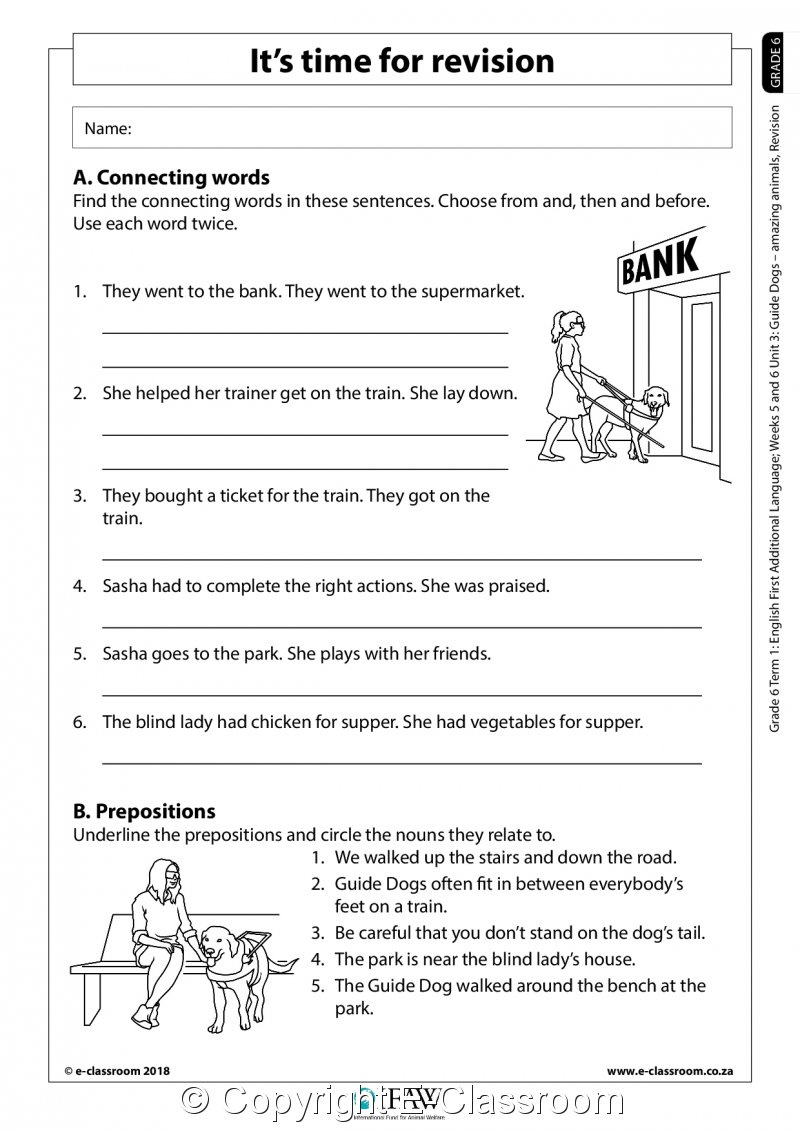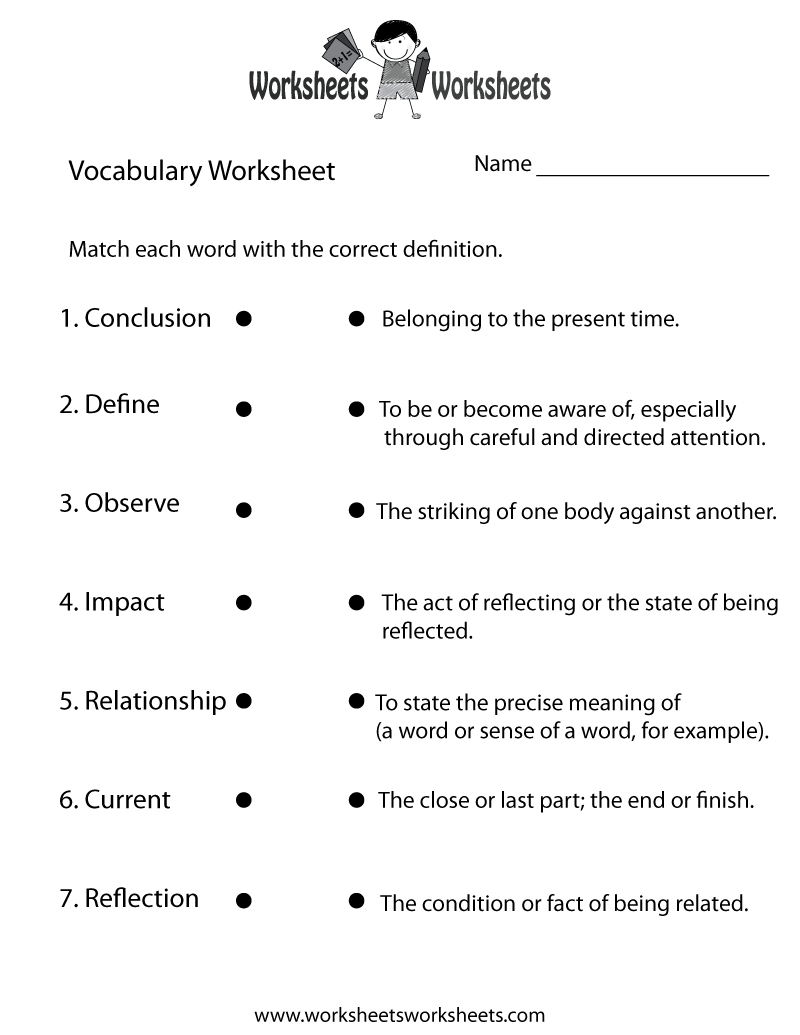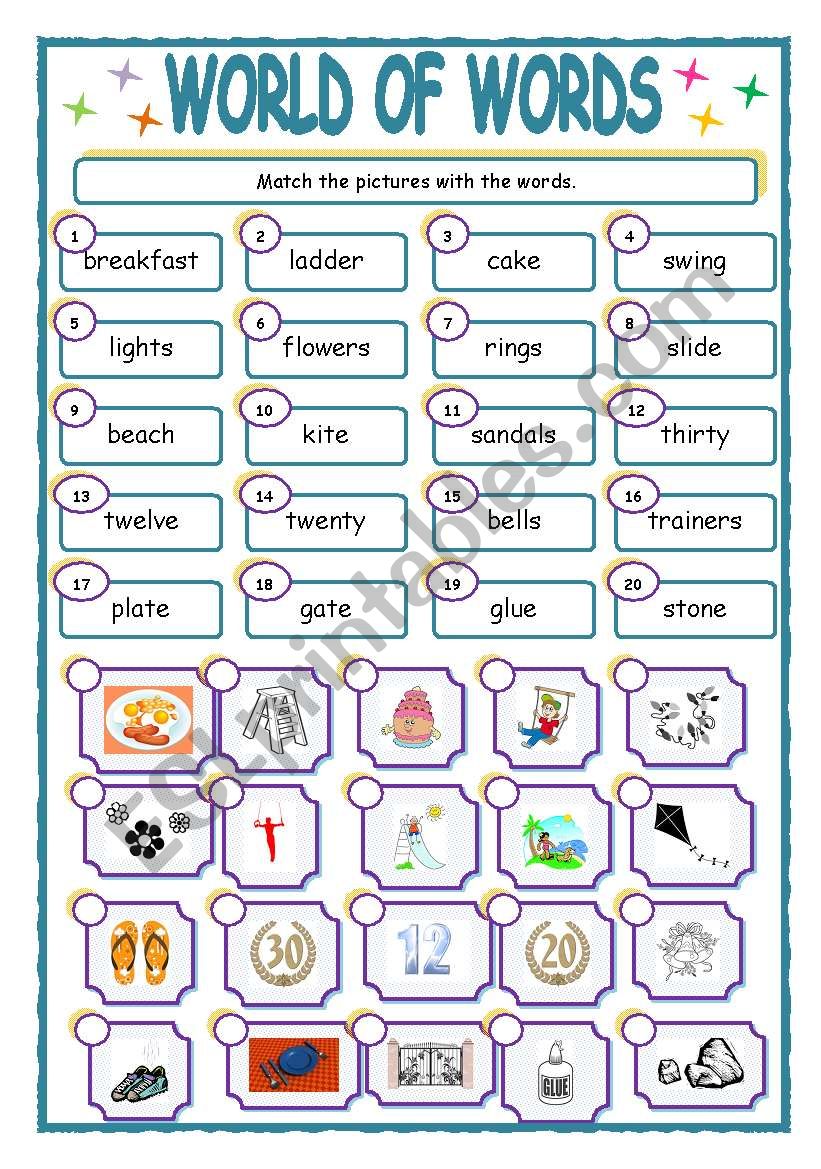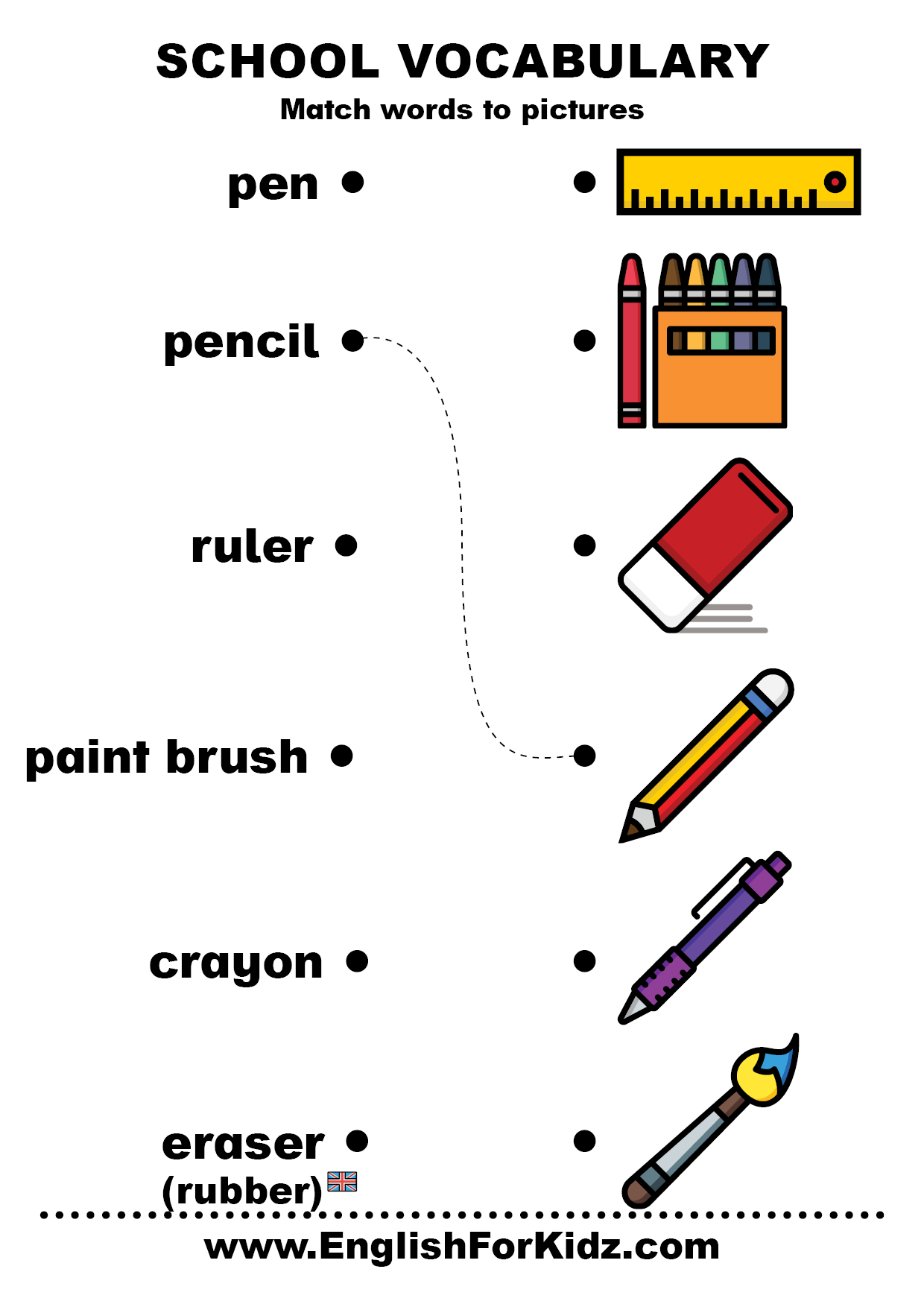
The Indispensable Role of English Language Worksheets in Modern Education
In the vast and intricate landscape of language education, certain tools stand out for their consistent efficacy and adaptability. Among these, English language worksheets have carved an indispensable niche, serving as a cornerstone for both educators and learners across all proficiency levels. Far from being mere paper-based exercises, these structured activities offer a dynamic and multifaceted approach to acquiring, reinforcing, and assessing English language skills. This article delves into the profound importance of worksheets, exploring their pedagogical benefits, diverse types, effective design principles, and their strategic integration into a comprehensive learning environment.
The Pedagogical Powerhouse: Why English Language Worksheets Work
The enduring popularity of English language worksheets stems from a robust set of pedagogical advantages they offer:

- Reinforcement and Practice: Language acquisition is not a one-time event; it requires constant reinforcement. Worksheets provide the ideal platform for repeated practice of grammatical structures, vocabulary, and sentence patterns. This iterative engagement solidifies understanding and aids in the transition from passive recognition to active recall and application.
- Targeted Skill Development: Unlike free-form conversation or extensive reading, worksheets can be meticulously designed to focus on specific language components. Whether it’s mastering the present perfect tense, understanding the nuances of phrasal verbs, or improving reading comprehension strategies, worksheets allow for isolated and concentrated practice of particular skills.
- Structured Learning and Scaffolding: Worksheets often break down complex linguistic concepts into manageable, bite-sized tasks. This scaffolding approach guides learners step-by-step, building confidence and competence as they progress from simpler to more challenging exercises. Clear instructions and examples provide a supportive framework, especially for independent study.
- Assessment and Feedback: Worksheets serve as invaluable formative assessment tools. Educators can quickly gauge students’ understanding of a recently taught topic, identify common errors, and pinpoint areas requiring further instruction. For learners, immediate feedback (often provided through answer keys or teacher corrections) is crucial for self-correction and understanding their progress.
- Independent Learning and Self-Pacing: Worksheets empower learners to take ownership of their education. They can work at their own pace, reviewing sections as needed without the pressure of a group setting. This self-directed learning fosters autonomy and develops crucial study habits.
- Variety and Engagement: Well-designed English language worksheets employ a diverse range of task types – matching, fill-in-the-blanks, true/false, multiple choice, short answer, sentence completion, crosswords, word searches, and more. This variety combats monotony and keeps learners engaged, catering to different learning styles and preferences.
- Differentiation: Worksheets can be easily adapted to cater to mixed-ability classrooms. Teachers can provide differentiated versions – simpler ones for struggling learners and more challenging ones for advanced students – ensuring that every learner is appropriately challenged and supported.





Indeed, the true power of English language worksheets lies in their versatility and their ability to transform abstract linguistic rules into concrete, actionable exercises.
A Spectrum of English Language Worksheets: Categorizing for Clarity

The world of English language worksheets is incredibly diverse, catering to every facet of language learning. Here’s a breakdown of common categories:
-
Grammar Worksheets: These are perhaps the most ubiquitous. They target specific grammatical structures such as:

- Tenses: Simple past, present perfect, future continuous, conditionals, reported speech.
- Parts of Speech: Nouns, verbs, adjectives, adverbs, pronouns, prepositions, conjunctions, interjections.
- Sentence Structure: Subject-verb agreement, active/passive voice, direct/indirect objects, compound/complex sentences.
- Articles and Determiners: ‘a’, ‘an’, ‘the’, quantifiers.
- Prepositions: Of place, time, movement.
- Modals: Can, could, may, might, must, should, will, would.
- Example tasks: Fill-in-the-blanks with the correct verb form, rewrite sentences in a different tense, choose the correct article, identify parts of speech.
-
Vocabulary Worksheets: Essential for expanding a learner’s lexicon:
- Word Matching: Connect words to definitions, synonyms, or antonyms.
- Fill-in-the-Blanks: Use context clues to complete sentences with appropriate vocabulary.
- Word Families: Explore different forms of a word (e.g., beauty, beautiful, beautifully).
- Collocations: Practice common word pairings (e.g., "make a decision," "take a break").
- Idioms and Phrasal Verbs: Understanding and using idiomatic expressions.
- Crosswords and Word Searches: Fun ways to reinforce vocabulary recognition.
- Example tasks: Match adjectives to their opposite meanings, complete sentences with appropriate verbs, categorize words by topic (e.g., food, travel, emotions).
-
Reading Comprehension Worksheets: Designed to improve reading skills:
- Short Passages with Questions: Test understanding of main idea, specific details, inference, and vocabulary in context.
- Sequencing Events: Arrange sentences or paragraphs in chronological order.
- Summarization Tasks: Encourage identifying key information and condensing it.
- True/False Statements: Assess literal comprehension.
- Example tasks: Read a short story and answer questions about character motivations, identify the topic sentence of a paragraph, decide if statements about a text are accurate.
-
Writing Worksheets: Focus on developing written expression:
- Sentence Construction: Reordering words to form grammatically correct sentences.
- Paragraph Writing Prompts: Guide learners to write cohesive paragraphs on a given topic.
- Essay Outlines: Help structure longer pieces of writing.
- Punctuation and Capitalization: Practice correct usage.
- Story Starters: Provide initial sentences or scenarios to spark creativity.
- Example tasks: Combine simple sentences into complex ones, write a short descriptive paragraph about their favorite hobby, correct punctuation errors in a provided text.
-
Listening Comprehension Worksheets: Often paired with audio files:
- Fill-in-the-Blanks: Complete sentences from a spoken text.
- Note-Taking: Listen for specific information and jot it down.
- Multiple Choice Questions: Answer questions based on an audio recording.
- Example tasks: Listen to a news report and answer who, what, when, where questions; complete a dialogue with missing words from a recording.
-
Phonics and Pronunciation Worksheets: Especially crucial for beginners and young learners:
- Rhyming Words: Identify words that rhyme.
- Word Families: Practice words with similar sound patterns (e.g., cat, hat, sat).
- Minimal Pairs: Distinguish between similar-sounding words (e.g., ‘ship’ vs. ‘sheep’).
- Stress and Intonation: Mark stressed syllables or indicate rising/falling intonation.
- Example tasks: Circle the word that has a different vowel sound, underline the stressed syllable in multi-syllable words.

Crafting Effective English Language Worksheets: Design Principles
The effectiveness of a worksheet lies not just in its content but also in its design. The journey of creating or selecting effective English language worksheets requires adherence to several key principles:
- Clarity of Instructions: Instructions must be concise, unambiguous, and easy to understand, preferably with a clear example.
- Appropriate Level: The content and complexity must match the learners’ proficiency level. Overly easy worksheets bore, while overly difficult ones frustrate.
- Purposeful Design: Every task should have a clear learning objective. Avoid "busy work" that doesn’t contribute meaningfully to skill development.
- Engaging Content: Incorporate relevant topics, interesting facts, real-world scenarios, and appealing visuals (images, diagrams) to capture and maintain learner interest.
- Variety of Task Types: Mix and match different exercise formats within a single worksheet to keep learners engaged and cater to diverse learning preferences.
- Scaffolding and Progression: Tasks should ideally progress from simpler to more complex, building on previously acquired knowledge.
- Manageable Length: Worksheets should be long enough to provide sufficient practice but not so long as to cause fatigue.
- Clean Layout and Readability: Use clear fonts, appropriate spacing, and logical organization to ensure the worksheet is easy on the eyes and simple to navigate.
- Answer Key (where appropriate): For independent study, a clear and accurate answer key allows learners to check their work and learn from their mistakes.
Integrating Worksheets into the Learning Process
Worksheets are most effective when integrated thoughtfully into a broader curriculum, rather than being used in isolation.
- Pre-Lesson Activation: Use a short worksheet to activate prior knowledge or introduce new vocabulary before a lesson.
- During-Lesson Practice: Employ worksheets for guided practice immediately after a concept has been introduced, allowing students to apply what they’ve just learned.
- Post-Lesson Reinforcement/Homework: Assign worksheets as homework to consolidate learning and provide additional independent practice.
- Formative Assessment: Use them to quickly assess understanding and identify areas needing review or re-teaching.
- Review and Revision: Worksheets are excellent for revisiting previously covered material, especially before tests or exams.
- Differentiation: As mentioned, they can be adapted to support learners at various levels within the same class.
- Supplementing Digital Learning: In an increasingly digital world, printable worksheets can offer a welcome break from screens, providing a tactile learning experience.
Digital vs. Printable English Language Worksheets: A Modern Perspective
The advent of technology has broadened the scope of worksheets.
- Printable Worksheets: These remain popular for their accessibility, ease of distribution, and the tactile experience of writing. They don’t require devices or internet access, making them ideal for all learning environments.
- Digital Worksheets: Interactive online platforms offer advantages like instant feedback, auto-grading, multimedia integration (audio/video), and adaptive learning paths. Many online resources provide a vast library of interactive English language worksheets, often with gamified elements to boost engagement.
The most effective approach often involves a hybrid model, leveraging the strengths of both digital and traditional formats to create a comprehensive and engaging learning experience.
Challenges and Considerations
While incredibly beneficial, it’s important to acknowledge potential pitfalls:
- Over-reliance: Worksheets should complement, not replace, interactive learning, communicative activities, and genuine language use.
- Quality Control: With the proliferation of online resources, the quality of worksheets can vary significantly. Educators must carefully vet materials to ensure accuracy and pedagogical soundness.
- Lack of Personalization: Generic worksheets may not always perfectly align with individual learner needs or interests, necessitating adaptation by the teacher.
Conclusion
In summation, English language worksheets are far more than just static exercises; they are dynamic tools that underpin effective language acquisition. From reinforcing grammar and expanding vocabulary to honing reading and writing skills, their structured nature, adaptability, and capacity for targeted practice make them indispensable assets in any English language learning journey. Whether in traditional classrooms or digital learning environments, the strategic design and integration of high-quality worksheets empower learners, support educators, and ultimately pave the way for greater fluency and confidence in English. As language education continues to evolve, the enduring value of well-crafted worksheets will undoubtedly remain a constant, guiding learners towards linguistic mastery.
